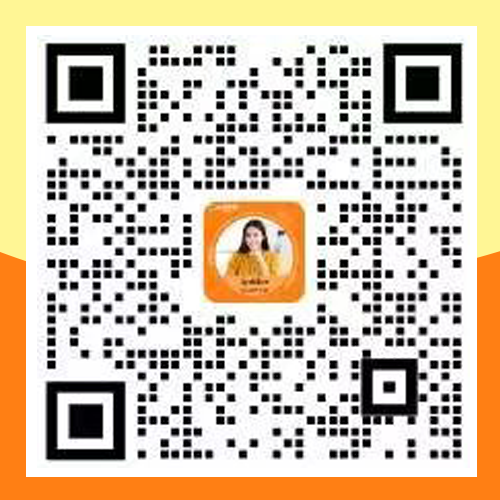

作為中華民族一大傳統(tǒng)節(jié)日,元宵之夜,大街小巷都會(huì)張燈結(jié)彩,人們會(huì)賞燈、猜燈謎、吃湯圓……將從除夕開始延續(xù)的慶祝活動(dòng)推向又一個(gè)高潮。今天,就和大家聊聊,元宵節(jié)里幾大世代相沿的習(xí)俗,用英語(yǔ)怎么說!
元宵節(jié)常用詞語(yǔ)的英文說法
在元宵節(jié)來臨之際,祝你平安,快樂,幸福。萬事圓!
Wishing you peace, joy and happiness and everything all the best through Lantern !
致以熱烈的祝賀和良好的祝福,元宵節(jié)快樂!
Warm greetings and best wishes for Lantern Festival!
Eating Yuanxiao 吃元宵
People will eat yuanxiao, or rice dumplings, on the Lantern Festival, so it is aslo called the “Yuanxiao Festival”, Yuanxiao also has another name, tangyuan. It is small dumpling balls made of glutionous rice with rose petals, sesame, bean paste, walnut meat, dried fruit, sugar and edible oil as filling. Tangyuan can be boiled, fried or steamed. It tastes sweet and has the meaning of reunion. So people eat them to denote union, harmony and happiness for the family.
民間過元宵節(jié)都會(huì)吃元宵。元宵由糯米制成,或?qū)嵭模驇юW,餡有豆沙、白糖、山楂、各類果料等。食用時(shí)煮、炸、蒸皆可。起初,人們把這種食物叫作“浮圓子”,后來又叫湯團(tuán)或湯圓,這些名稱與“團(tuán)圓”字音相近,取團(tuán)圓之意,象征全家人團(tuán)團(tuán)圓圓和睦幸福。
Guessing lantern riddles 猜燈謎
"Guessing lantern riddles"is an essential part of the Festival. Lantern owners write riddles on a piece of paper and post them on the lanterns. If visitors have solutions to the riddles, they can pull the paper out and go to the lantern owners to check their answer. If they are right, they will get a little gift. The activity emerged during people's enjoyment of lanterns in the Song Dynasty (960-1279).
猜燈謎也是元宵節(jié)活動(dòng)的一個(gè)基本組成部分。燈籠的所有者將謎語(yǔ)寫在一張紙條上,然后將紙條展示在燈籠上。如果賞燈者猜出謎語(yǔ),就將紙條取出,然后找燈籠所有者確認(rèn)答案。答對(duì)的話,可以領(lǐng)取一份小禮品。這個(gè)活動(dòng)起源于宋朝(960—1279)。
Lion dance 舞獅子
Lion dance is one of the oldest traditions to celebrate the Chinese New Year. In ancient times, people regarded the lion as a symbol of bravery and strength and believed the dance could drive away bad fortune to protect people and their livestock. The custom has continued to the modern day and lion dances are performed at important events on the Chinese calendar, such as the Lantern Festival, to bring good luck.
舞獅子是另一項(xiàng)慶祝新春的古老習(xí)俗。在古代,人們把獅子作為勇氣和力量的象征,認(rèn)為舞獅可以消災(zāi)降福。所以舞獅子的傳統(tǒng)就延續(xù)至今,并且每逢佳節(jié)或慶典,如元宵節(jié)都會(huì)以舞獅子來祈求好運(yùn)。
Dragon dance 舞龍燈
Dragon dance is a form of traditional dance and performance in Chinese culture. Like the lion dance it is most often seen in festival celebration. The dance is performed by a team of dancers who manipulate a long flexible figure of a dragon using poles positioned at regular intervals along the length of the dragon.
舞龍燈是中國(guó)獨(dú)具特色的民俗活動(dòng)。與舞獅子一樣,每逢佳節(jié),人們都要耍龍燈。表演者由數(shù)十人組成,每人用一桿間隔支撐起一條長(zhǎng)龍。
Walking on stilts , or Cai Gaoqiao 踩高蹺
Walking on stilts, or Cai Gaoqiao, is another popular traditional performance for the Lantern Festival, especially in Northern China. According to the archives, our Chinese ancestors began using stilts to help them gather fruits from trees. This practical use of stilts gradually developed into a kind of folk dance.
踩高蹺是元宵節(jié)的另外一項(xiàng)重要民俗,尤其是在北方地區(qū)。根據(jù)記載,我們的祖先踩高蹺是為了從樹上摘果子。之后,高蹺就發(fā)展成為一種群眾性技藝表演藝術(shù)。
 粵公網(wǎng)安備
粵公網(wǎng)安備 國(guó)家企業(yè)信用
國(guó)家企業(yè)信用 網(wǎng)站備案信息查詢
網(wǎng)站備案信息查詢